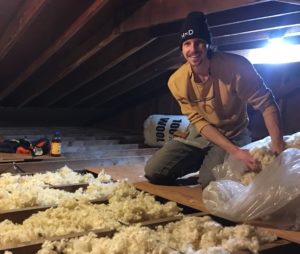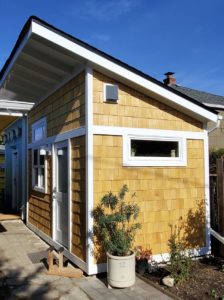Insulation installation is a crowded and underappreciated space. It is also one that detests change. It is hugely competitive – ie single-digit margins, which is probably the tallest hurdle for getting new products to market. Think of it this way: you are in a competitive scenario for every quote and your crew has to perform timely or the 7.5% margin is going to be eviscerated. Now think about adding a product that installs slightly differently and costs more. You can see how widespread adoption is not that easy.
What if we came to appreciate that insulation is ~2% of construction costs, wildly important in the performance equation, and therefore decided to slow down, get it right and maybe even use some high-integrity materials?
Meet Barry who founded and runs HD Construction in Seattle. He’s spent a career in building, subscribes to the theory above, and asked us if we could help him get an ancillary business going. Ummmm, yes, all day long.
Please read on to learn more about Barry, his company, and his very cool views on how we can all do better.
Q: Tell us about your company and its origins.
I started out in 2012 offering home services in Seattle, and have grown to specialize in building backyard cottages and offices, and doing larger remodels and custom woodworking. During the journey, I’ve realized that many homeowners are hungry for information about performance building products that are better for their health and the health of the planet. So several subcontractors I work with and I have educated ourselves so we can share this important information. We are always learning, and we love helping people make sustainable choices.

Q: How would you characterize your philosophy towards building?
Our motto is: We put relationships first. I always want my clients to feel heard and respected. I work with clients to get to the heart of their goals and get them the best value I can for their budget and circumstances. Also of paramount importance: the health and comfort of my customers, reducing waste and our carbon footprint, and delivering an excellent final product.
Q: Your business is focused on DADUs. What are those?
DADUs — detached accessory dwelling units — are more commonly called backyard cottages. They’re typically smaller structures than the main house, but can now be up to 1,000 square feet in Seattle! They’re often used as rental properties or living spaces for extended family.  My mother lives in the cottage we have on our property. It means she can be close to her grandchildren on a daily basis. She could not have afforded to live in Seattle otherwise, so this allows her to be part of the community and a close part of our family — and still have a quiet, cozy place to go home to at night that is her own.
My mother lives in the cottage we have on our property. It means she can be close to her grandchildren on a daily basis. She could not have afforded to live in Seattle otherwise, so this allows her to be part of the community and a close part of our family — and still have a quiet, cozy place to go home to at night that is her own.
Q: How has COVID 19 affected your business?
We have worked hard to follow all of the state laws and best-practices to a T, and everyone on my crew, as well as the subcontractors I hire, must comply with all safety requirements. Just as I want my customers to have safe and healthy homes, I also want everyone I work with to stay safe and healthy through this crisis. I have two sons and my wife now works from home, so I’m very sensitive to the needs of customers who are working from home and have kids schooling from home. I have scheduled more virtual meetings and have to plan for social distancing when there are people stuck at home while we’re working.
Q: What building industry trends are just trends? and what is actually changing for good?
Flex spaces and attached or detached living spaces for extended family will only become more popular and desirable. Even after things “get back to normal,” many people will continue working, exercising, and entertaining at home. And multi-generational living will only become more common as we live longer, healthier lives. Sustainable materials will also become more popular as great new products emerge and become more well known, and as people reckon with the immensity of the climate change threat. Trends that are more ephemeral are often related to finish work. You can definitely build sustainably no matter your style, but the most sustainable practice is to build once and have it last. So we tend toward a classic Pacific Northwest style that will last the test of time.
Q: How did you first hear of Havelock?
I was at the JLC convention in Portland and saw a presentation and was instantly impressed. I grew up on a ranch and it immediately struck a chord with me. I love the smell and feel of it — as do customers who have seen the product.
Q: How does Havelock fit into your overall build material choices?
Premium products that perform well over time and are carbon-friendly are what we believe in. We are on a mission to change how people think about building, living, and spending. Havelock aligns with that mission.
Q: How was your experience in installing Havelock? and can you comment on performance?
Due to the pandemic, my wife now works from home. We built her an amazing detached office using Havelock wool insulation. On that job, we hand-packed the insulation, which was labor-intensive, and at the same time quite easy. My mother actually helped loft the material as I installed it in the walls! For a whole-house project, installation moved faster once we learned how to get the wool through the hoses to blow fill it. The product is a joy to work with. My team was actually smiling during the install. The material is wonderful, the smell is comforting, and I feel better using a natural, sustainable product. My customers are reporting very comfortable spaces. We love it.

Is the only to install blow fill ?
For smaller projects it is possible to hand pack loose fill. For larger projects we suggest the use of a blower. This video has all the details. Thanks. https://youtu.be/7cSFKMZx4lQ
can it be installed by a DIY ?
yes, absolutely. Its perfect for DIY’ers
How do you blow it in ?
Here is a video we that shows all the details behind blowing in our loose fill. Thanks for reaching out. https://youtu.be/7cSFKMZx4lQ
What is the fire rating of the wool insulation? Also what is the r value for 2×4 and 2×6 walls . Do you make it for 16” and 2 ft. Centres
We are class A rated for fire hazard per ASTM E84. We make 16 and 24in O/C R13 and R20 batt to fit 2×4 and 2×6 respectively. We also have loose fill which has a higher R Value per inch than our batts…. 4.3 vs 3.6. Thanks!
Committed to wool insulation but need installer in Las Vegas asap!